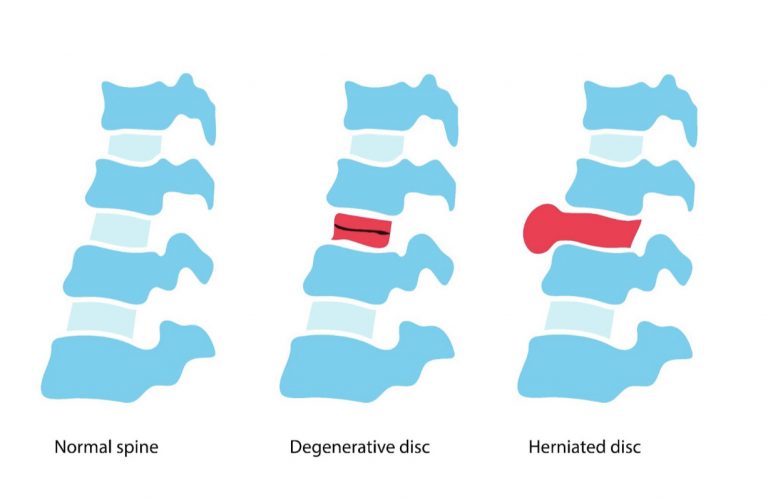Degenerative disc disease (DDD) is a spinal condition that is caused by the deterioration of the discs with time as a result of injury. The spine is composed of bones called vertebrae that protect the spinal cord as well as provide the body with support and assistance with movement. Each vertebra is surrounded by cushioned discs made of a gelatinous interior and a dense exterior cartilage shell that prevents the bones from grinding together. As you age the degeneration causes the disc to lose some of its cushion or shock absorption capabilities.
With DDD, the disc may lose some of its fluid or water content which results in less mobility. The disc also can lose some of its disc height, which shrinks the disc or causes it to become thinner or narrower. Thereby, resulting in less stretch on the ligaments of the spine. The following article will act as an overview of the DDD symptoms and diagnosis process as well as the method for coming up with a treatment plan for this debilitating condition.
DDD Symptoms
In most cases, DDD produces few or no symptoms but if the damaged disc loses enough height or ruptures, painful and severe symptoms may appear. These symptoms can include localized pain in the neck or back, numbness, tingling, or muscle weakness as well as radiating pain to the extremities or discomfort in the abdomen or chest. If you are experiencing these symptoms, seek the help of your physician who can provide you with an accurate diagnosis of the condition and recommend a treatment plan that is right for you.
DDD Diagnosis
It is important that you receive a thorough examination from your physician to ensure the proper diagnosis. Physicians may use the following methods to provide you with a diagnostic:
- Physical and/or neurological examination
- X-rays
- CT scans
- MRIs
- Selective nerve root block (SNRB) and diagnostic dye injections
DDD Treatment
Once you have been diagnosed, your physician can suggest conservative treatment options, including:
- Over the counter or prescription pain medications and anti-inflammatory medications (NSAIDs)
- Physical therapy or weight management to reduce stress and strengthen the core muscles
- Low impact exercise including yoga, pilates, swimming, elliptical machine, or stationary bike
If these methods fail to relieve your pain or you are experiencing further issues such as pinched nerves in the spinal canal or spinal stenosis (narrowing of the spine) your physician may recommend surgery. At BEST Health System, we offer various outpatient procedures to alleviate the symptoms of DDD. To find out if you are a candidate for our minimally invasive spine surgery, contact us today!
